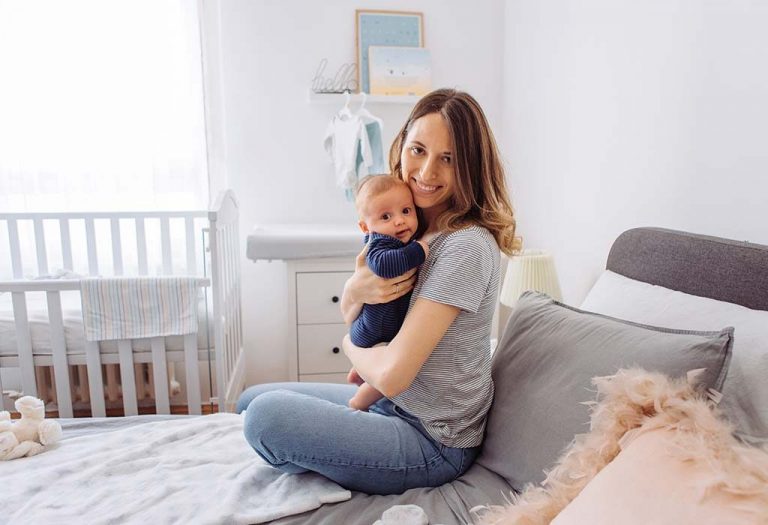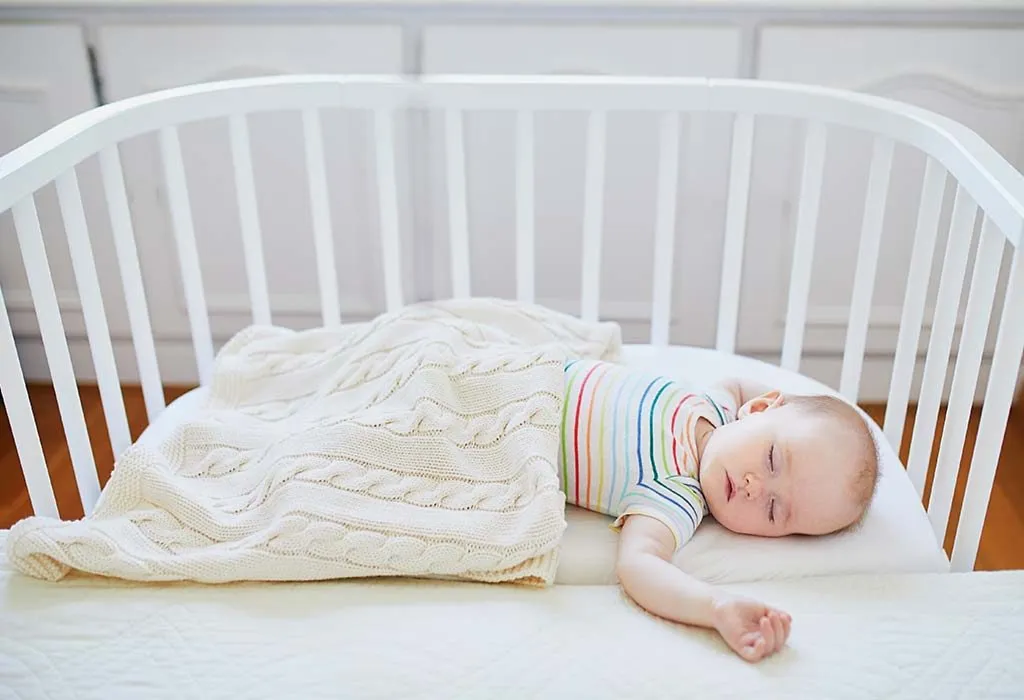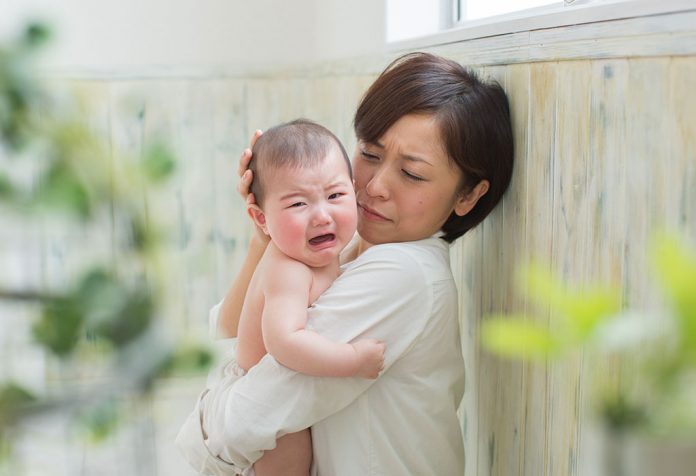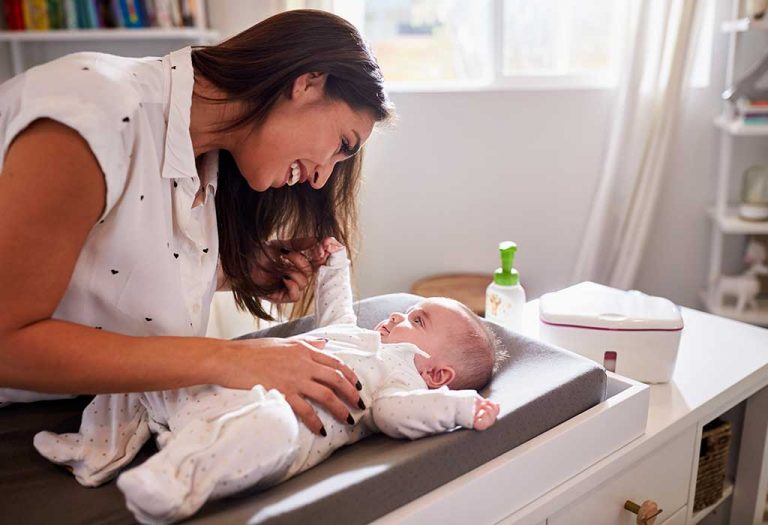Room Sharing With Baby – Important Tips for Parents
Congratulations on your bundle of joy! Your newborn baby brings loads of happiness, joy, and hopes into your lives, and along comes many responsibilities and duties towards the baby. One of the basic needs of a newborn baby is to sleep peacefully and comfortably. According to a 2016 research by AAP, it was established that the risk of SIDS goes down by 50 per cent when the parents share a room with their baby for six months or up to one year of age. So, if you too are planning to share a room with your munchkin, this post can prove to be helpful as it talks about some important tips about having a baby sleeping in the same room with parents as well as the risk of room sharing with a baby.
What Is Meant by Room Sharing With Baby
It is imperative to know what exactly is meant by the term ‘Room-sharing’ with baby! Well, room sharing means sleeping in the same room with your baby, but that does not mean sleeping on the same surface. For instance, when parents share a room with their baby, they sleep on their bed, and the baby sleeps in his crib, bassinet, or other such places. Some parents may use the terms ‘room-sharing’ and ‘bed-sharing’ interchangeably, but the latter puts your baby at an increased risk of SIDS. Babies’s sleeping space should be at arm’s reach of your sleeping space or bed to avoid the risk of suffocation and sudden infant death syndrome (SIDS) (1).
For some families, room sharing may be the only option available because of constrained space or other such reasons. On the other hand, other families may not be comfortable with the idea of room-sharing as it may put others’ safety and sleep at stake. Well, there is no denying that all parents think and do what is best for their baby. However, if just by sharing the master bedroom with a baby, you can reduce the risk of SIDS by a considerable percentage, then it is worth a try!
Benefits of Room Sharing With Baby
Room sharing can be beneficial for babies in a lot of ways.
- When you share a room with your newborn baby, you get to provide immediate assistance to your baby without any delay. Feeding, sleeping, diaper changes, and playtime are move convenient when you share room with your baby.
- It is easier to watch over your baby when they are sleeping in your room. This could mitigate the risk of baby trouble due to any ailment as you keep a check on them frequently.
- It also reduces the risk of sudden infant death syndrome (SIDS) as you can quickly check your baby at frequent intervals at nighttime. According to the American Academy of Pediatrics, room sharing reduces the risk of SIDS by 50% (2).
- Parents of newborns are usually tired, so the thought to getting up from bed, going to the baby’s room can be quite dismissive. Room sharing provides timely and proper breastfeeding without any fuss (3).
- Room sharing in the first 6 months of life increases the likelihood of positive behavioural outcomes in middle childhood of the baby as they are taken care of propely without having to wait for the caregiver (3).
Are There Any Cons When Sharing a Room With an Infant?
As discussed above, room sharing with infants is a great way of keeping your baby safe. However, there are some cons that are associated with this practice. The first and foremost is the chances of the baby migrating to the parent’s bed, which puts the infants at a greater risk of SIDS or sudden infant death syndrome. Apart from posing a risk to the baby, it has been observed that room-sharing babies sleep shorter stretches and also sleep less during the course of the night. As a result, mothers of such infants sleep less, too, and thus, sometimes, sleep deprivation may occur in such mothers. The sleep-deprived mothers are at a greater risk of developing PPD or postpartum depression.
Tips for Sharing a Room With a Baby
Here are some tips for sharing a room with babies:
1. Make a separate baby zone
The first and foremost thing that you should do is to create a separate baby zone in the bedroom, which should be completely separate from your own sleeping zone. The American Academy of Pediatrics suggests sharing bedroom with baby without a separate bed for babies as it reduces the chances of sleep-related deaths in babies (4). Using a room divider or curtain can be helpful in creating a mock nursery within the room. There should be no cords or cables hanging near babies’ beds; make sure to babyproof the room (5). This is a great way of getting the baby into the habit of sleeping in his own space, and the transition from your room to the baby’s own room may become easier!
2. Move the crib away
Just because the baby is sleeping in the same room, does not mean that you should place the crib next to your bed. This may make you check on your baby more often and doing so may cause hindrance in your baby’s sleep training schedule. Keeping some distance between your bed and your baby’s crib may assist in better sleep training.
3. Keep the baby within your sight
The whole idea of room sharing is to be with your baby in the same room so that you can tend to the baby’s needs as soon as the requirement arises, and for that, it is important that you are able to see your baby from your bed. Therefore, instead of placing the crib in a corner of the room where you cannot see your munchkin, place the crib at a place where you can easily keep an eye on your little one and as soon as you feel your baby needs you, you can be there for him!
4. Buy a White-noise device
White noise devices can help create a comfortable sleeping experience for your baby by dimming other disturbing noises that can disrupt your baby’s sleep, such as toddlers running around the house, dishes being washed, getting ready for bed, etc. If you wish to use other options to create white noise such as fans, well, that works well too.
5. Pay heed to the room lighting
Bright lights may not be a good idea if a newborn baby and toddler are sharing a room with parents. Make sure you keep the sleeping area dark by placing blackout curtains and dim lights. Darkness is a perfect recipe for sound sleep, however, keeping a small night lamp on or keeping the bathroom door slightly open with the light on, can help you navigate in the room.
6. Mellow down any distractions
Have you ever wondered why nurseries are always in such soft pastel colours? Well, that is because soothing shades help induce better sleep in babies as well as adults. Make sure there are no stimulating distractions such as elaborate wall art, bright-coloured paintings, etc., which can distract your baby. Also, do not keep the television, mobile phones, or other such distractions in the room.
7. Get a good rug
Placing a rug is a great way of creating two separate spaces in the same room. Also, a rug can absorb noises when you wish to tiptoe in the room without disturbing your little one.
These are some amazing parents sharing a small room with baby ideas and tips that you can incorporate to create your baby’s own little space. Well, you can get all creative and come up with some of your creative ideas, when it comes to sharing room with your baby. Any change is difficult to adapt but once you are clear in your mind and heart, rest everything else falls in place.
How Long to Room Share With Your Baby?
According to experts at the American Academy of Pediatrics, parents should continue room sharing with the babies for the first six months to preferably one year, as it is helpful in reducing the rates of SIDS (1) (6).
FAQs
1. How can I get my sleep while room-sharing with my baby?
Whether you share your room or not, your sleep is likely to be affected in the early days of infancy, as babies frequently wake up at night to feed and poop. Therefore, parents should catch their zzz’s when the baby sleeps.
2. Should I make my baby sleep in the room with their siblings?
It is ideal for parents to avoid making their babies sleep in the same room with their siblings for at least a year for safety purposes. For instance, a well-meaning sibling may want to pick up the baby while sleeping or put a blanket or a toy on the baby because they think the baby is cold, which may put babies at risk of SIDS.
3. What is the difference between room-sharing, co-sleeping, and bed-sharing?
- Room sharing means sharing room with the baby, with or without separate beds.
- Co-sleeping refers to sleeping together in the same bed with the baby.
- Bed sharing means sharing the bed with the baby.
Every mother, every baby, and every situation is separate and different. Where sharing a room with your baby reduces the risk of SIDS and makes breastfeeding easier for the mother, it may sometimes compromise with the mother’s health. Whatever you decide, make sure you talk to your doctor in detail as guidelines are made merely with the aim of guiding and these are not the set rules that every set of parents need to abide by. Talk to your doctor about your situation and chalk out what works best for you and your baby!
References/Resources:
1. Reduce the Risk of SIDS & Suffocation; American Academy of Pediatrics; https://www.healthychildren.org/English/ages-stages/baby/sleep/Pages/Preventing-SIDS.aspx
2. How to Keep Your Sleeping Baby Safe: AAP Policy Explained; American Academy of Pediatrics; https://www.healthychildren.org/English/ages-stages/baby/sleep/Pages/A-Parents-Guide-to-Safe-Sleep.aspx
3. Beijers R, Cassidy J, Lustermans H, de Weerth C. Parent-Infant Room Sharing During the First Months of Life: Longitudinal Links With Behavior During Middle Childhood. Child Dev.; PubMed Central; https://www.ncbi.nlm.nih.gov/pmc/articles/PMC7379577/; July 2019
4. Moon. R. Y, et al.; Sleep-Related Infant Deaths: Updated 2022 Recommendations for Reducing Infant Deaths in the Sleep Environment; Pediatrics; https://publications.aap.org/pediatrics/article/150/1/e2022057990/188304/Sleep-Related-Infant-Deaths-Updated-2022?autologincheck=redirected; June 2022
5. Make Baby’s Room Safe: Parent Checklist; American Academy of Pediatrics; https://www.healthychildren.org/English/safety-prevention/at-home/Pages/Make-Babys-Room-Safe.aspx
6. McCarthy. C; Room sharing with your baby may help prevent SIDS, but it means everyone gets less sleep; Harvard Health Publishing; https://www.health.harvard.edu/blog/room-sharing-with-your-baby-may-help-prevent-sids-but-it-means-everyone-gets-less-sleep-201706062525
Also Read:
Baby Fighting Sleep
Can Newborn Twins Sleep Together?
Sleeping Habit That Are Bad For Your Little One
When and How to Stop Co-sleeping With Your Child?
Was This Article Helpful?
Parenting is a huge responsibility, for you as a caregiver, but also for us as a parenting content platform. We understand that and take our responsibility of creating credible content seriously. FirstCry Parenting articles are written and published only after extensive research using factually sound references to deliver quality content that is accurate, validated by experts, and completely reliable. To understand how we go about creating content that is credible, read our editorial policy here.























